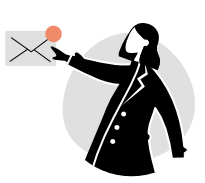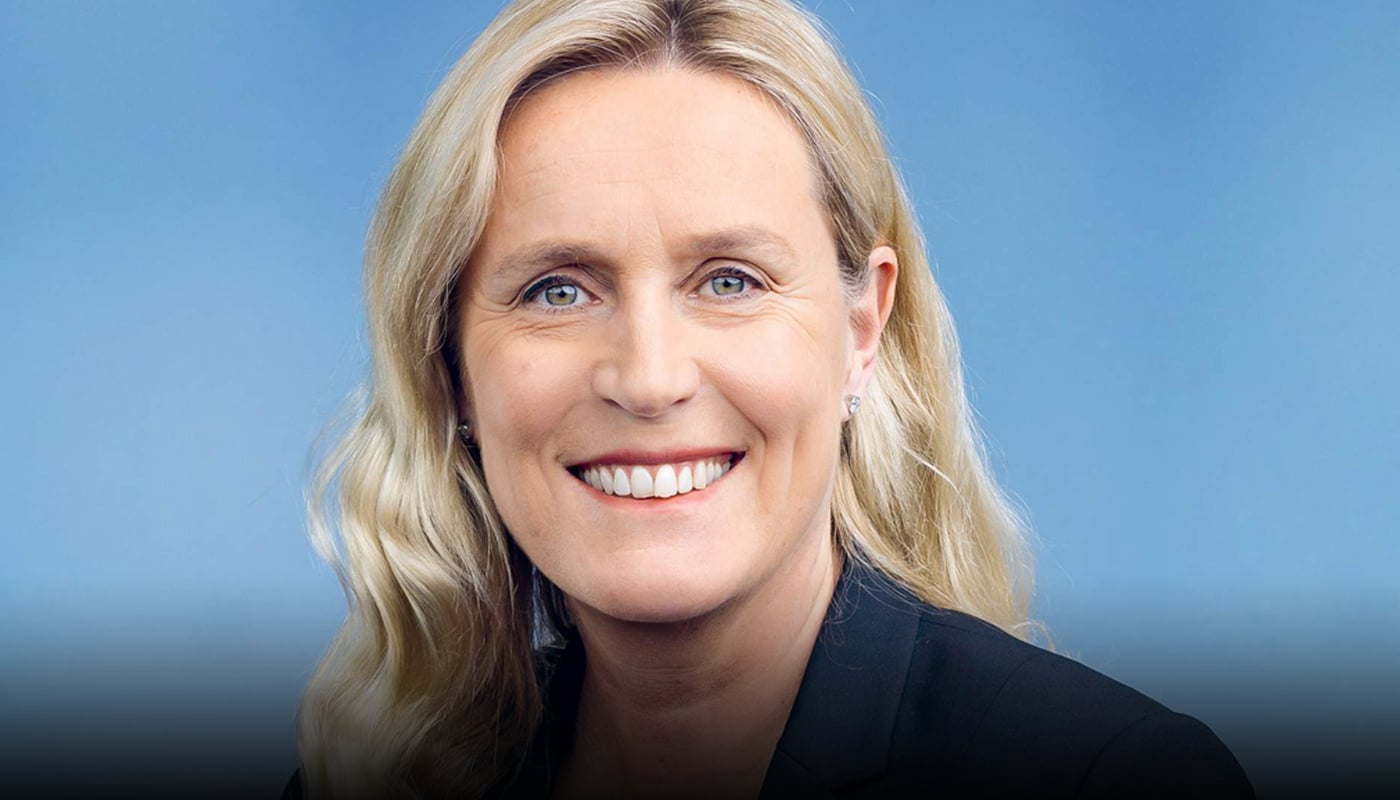It’s not: what do you change? It’s: who do you change with?
Nearly all industries face challenges requiring wide ranging transformations. Especially, for leaders, advanced skills are needed to champion the change. Latest studies state that 2/3 of transformation projects fail due to management failures or employee resistance. Based on her experience and learnings of the various senior management roles Mara Papsdorf held in DAX/MDAX companies in the last years, she derived important success factors for Change Leaders. Through personal stories and practical examples, she shows how leaders develop a strong vision, take their employees and stakeholders on the transformation journey, and ensure to stay cool even in stressful situations.
Topics
Leadership & Communication
Details about the speaker
Today’s speaker Mara Papsdorf is a highly experienced leader who has been driving business transformations since the beginning of her career. She held various senior management positions in automotive lighting and strategic roles regarding change from component to system business and electromobility transformation.
Currently, she is heading as VP a global Center of Excellence in Procurement of a leading Dax semiconductor company located in Munich. Since 2019, she has sharpened the department towards a Service Function and supports the transformation of the global procurement organization.
00:11-01:30 Moderation: Hey, and welcome. You’re listening to the Her Career Voice podcast. This podcast is the one to listen to for diverse perspectives about the social, political, and scientific aspects that define our workplaces and especially the female career planning. Whether it’s professional growth and self-development, entrepreneurship, finances, or the all in all capability of our professional and private lifes.
We want to know more about female careers, learnings, experiences, and challenges, and learn how they have grown from them. Nearly all industries face challenges requiring wide ranging transformations. Especially for leaders, advanced skills are needed to champion the change. Latest studies state that two-thirds of transformation projects fail due to management failures are employee resistance.
Based on her experience and learnings of the various senior management roles, Mara Papsdorf held in DAX/MDAX companies in the last years. She derived important success factors for change leaders. Through personal stories and practical examples she shows how leaders develop strong vision, take their employees and stakeholders on the transformation journey, and ensure to stay cool, even in stressful situations.
01:48-16:44 Mara Papsdorf: Hi everyone. I’m Mara Papsdorf. Since over 10 years, I’m confronted with transformational challenges in my daily business life. According to later studies, two out of three transformations fail. Many due to management mistakes or employee resistance, but only few of those studies refer to successes. Well, that sounds challenging.
In this podcast, I tell you why I like transformations and would like to share with you my top success factors of business transformations underpinned with my personal learnings of different projects and roles. Currently I’m heading a Global Center of Excellence in Procurement at one of the leading semiconductor companies based in Munich.
For me to start and plan a transformation is a little bit like cooking a meal for the first time. You should be open for something, new need to choose the favorite meal and a great recipe for it, talk with people who have cooked it before about tips and tricks, source the best ingredients, and of course, practice. By the way, the cooking itself can be nicer together with friends, and it can also be helpful. Not only cook it the first time when you expect your mother-in-law for dinner. But honestly, what I mean with this picture in relation to companies is that the basic understanding why a transformation is needed and willingness to support is essential. It is the beginning, the big bang. However, also timing is key.
When a company is already in troubles, the pressures may be high enough to change and do it, but when the problems are already too big, profit is going down for example, time is running out. Because transformation takes some time and necessary tries and errors are not easy anymore.
In hindsight, this acknowledgement that transformation is needed and good timing were major success drivers and mainly influenced by top management. In my different roles and projects, I was mainly appointed to drive activities and bring transformation to life which led to a lot of learnings and shaped not only my career, but also my personal development as a leaser.
It is a bit in my character that I like to crack tough nuts and eagerness to try out new things, improve or to bring structure into chaos. But to move organizations with people of a lot of different expertise and views in one direction which is new, raises challenges, which you can imagine, led to a lot of personal learnings for.
Today I would like to share my three top important personal aspects of leadership in a transformation. First, prepare yourself for an expedition and stay cool. Second, create your own change vision and make your team part of the journey. Third approach early adopters, focus on communication to ensure a stakeholder buy-in and expect the unexpected.
So let’s get started with prepare yourself for an expedition and stay cool. Usually leading a transformation is not a sprint. It is more like a marathon of different disciplines, and a lot can happen along the way. Stakeholder and teams are demanding, high complexity and content problems to solve, combined with a high need for communication to explain backgrounds or reasons.
One of my major challenges was how to deal with my attempt to always deliver best results. Even though in an environment in which the definition of results is still changing and new things are tried out, perfection is in such cases an obstacle. And I came to the conclusion to focus besides results also on the way they are enabled and made it an essential part of my.
Little bit like on an expedition for which scenario, planning, risk management and preparation, how to master the way, is at least 50% of the tour success. A further learning here was that recharging and a fresh view are drivers of the next steps and even lead to better results. I’m very passionate and try to understand different use, but this can also be very energy intense to discuss or convince stakeholders and even hindering to push too hard. Today when I have the feeling of an energy train, kiking over the weekend in the Alps is my recharge island. I like doing sports outside and on the top of a mountain with fresh air, great views and being a bit detached from everything, I’m able to free up my mind. Sometimes I’m surprised how easy I came up with new ideas to tackle a problem. My key takeaway for you is focus on the approach, how to reach goals is in transformations equally important as the results because it defines the future way of. And derive your own ways to recharge your energy, to stay creative on this long journey.
My second aspect I want to share with you is related to your team as part of the transformation. Namely, create your own change vision and make your team part of the journey. Usually transformations are related to building up new capabilities or rebuilding structures. So at the beginning, you need to know where the function of this business is good at and where is the need to improve to succeed in the market or as a function. We did this once, for example, in the leadership team together with my peers after benchmarking and several team and stakeholder interviews in the workshop.
After deriving a target picture, we went back to our own teams and translated it into fields of action. My team deployment was a mix of changes. It is kind of normal for a transformation that some points are still not defined down to the last digit, but I was hesitant if things are maybe too vague to break down or even can lead to resistance.
However, I decided to discuss it with my teams. I choose to mainly explain the overall target and some boundary conditions and ask the team for their views what are strengths and rooms for improvement to fit into the target picture? The variety of comments and inputs by the colleagues was huge, from „This idea I had since years“ to „I doubt that this will fly“.
But I was positively surprised by the good vibes of the discussion and how it helped that key people turned into supporters. The importance here was the dialogue, the listening, to recap, to recalibrate, to finally ensure that everybody can participate and also owns part of this discussion.
One of my learnings here was that resistance is mainly caused when the why of a transformation is not properly explained. Or when there is a fear, how colleagues can fit into the new picture. One way to reduce this fear were discussions that new skills and personal development might come together for example, via short assignments or trainings, which I discussed in one of my previous roles with a team member and hr.
At the end, it turned out that some interests were perfectly fitting into a superpower which was needed, and he was in the end, a key player in the transformation. It might be an obvious advice that making your team part of the journey is key, but I learned that it’s often underestimated. It requires a combination of hard and soft skills, for example an understanding what drives people, an environment of trust and good communication which cannot only be done in between having a shower and breakfast.
Which brings me to my third and last success factor. Approach early adopters focus on communication to ensure a stakeholder buyin and expect the unexpected. One of my favorite tools was to copy what works for designers with focus groups or testimonials to test latest fashion trends, do pilots with early adopters, and use them to convince stakeholders.
In one of my current teams, we were developing new negotiation methods and concepts, how supplier involvement can lead to cost optimal solutions called partnering for value creation. And once we had the first draft of the concept, we reached out to key stakeholders in procurement, but also cross-functionally at R and D or divisions to test these approaches. There are always people in an organization who are open to try something new. One, learning was always to best consider what is in for them. In one of my cases, there was a huge cost pressure and with all solutions not reachable. So the openness from stakeholders that procurement could help and to try out new approaches to make the business more profitable was given.
We, on the other side, made it easy for the stakeholders and took fully care of the needed project management around the pilot. What was also very helpful was the fact that the target of the cross-functional team was the same, and in the end we made it. Those pilots are important in many aspects. For example, to learn on a low scale if the intended effect will be reached which aspects need to be revised and need to be done better in light of a global rollout.
If on the other hand, those pilots are successful, you create a huge pull effect in the organization which is already level two of a transformation. We also celebrated pilot successes with the joint teams. This bonding helped to create further mutual understanding and removed obstacles.
Sometimes obstacles are created simply by misunderstanding or lack of communication. For me, this was a huge learning some years ago. You can have the best solution on the planet, but if there is a second story behind the curtain which you do not know, it will not fly. In such cases, you will only remove if you have a trustful relationship with personal talks, be it with critical stakeholders, be it with your team, and this requires time.
For me what worked best was blocking specific time in my calendar, not only for the what topics, but also for those how parts. It was on some days so intense that I was even asked by some peers if I have a second office in the coffee corner. But this was in hindsight where major problems were solved and it was very helpful.
But of course my team and I should not create any bottlenecks. Here my learning were that multipliers play an important role. The identification of people who are easy to approach or in key positions and can help to sing the new change songs. And for a lot of people, this is also fun, brings them on the change train and is rewarding.
Overall to this third aspect my takeaway to share is that the creation of pilots with win-win solutions with stakeholders can be a push from conviction, and that communication is easier if you involve multipliers. But even the best communication cannot avoid the changes of the change can happen.
Especially in the last three years covid, major supply chain disruptions or inflation are constant companions. Many colleagues were telling me: I’m juggling the daily business on taskforce mode. There is no time for change. Hmm. So what to do with transformations in disruptive times? My main learning in the last two years is, expect the unexpected and focus on the parts of the transformation that can help to master the crisis as a tailwind.
We are now at the end of this podcast, and of course, leading transformation can be very challenging and requires a lot of energy. But it’s also very reward. One has the chance to create new ways of working which have an impact for a lot of employees. For me, that is a great purpose and worth working on it.
My team has now a great command of different expertise and joys, trying our new things, and is willing to tackle challenges, which makes me very thankful and proud. And as change in these times is here to stay, it is always good to be properly equipped for it. I hope my learnings resonate with you.
16:53-18:08 Moderation: If you’re interested in joining the conversation, become part of our herCareer community! Get together with thousands of female professionals in person at the leading and biggest career and networking-event in europe herCAREER Expo in Munich. Or start now by networking online at www.herCAREER-Lunchdates.com. We’d be delighted to connect you with inspiring women, virtually or in real life.
If you are looking for a new challenge, we might be able to help you with www.herCareer-Jobmatch.com and if you just want to leave us a message, feel free to do so via podcast@her-career.com .
Subscribe to the herCareer Voice Podcast on iTunes, Spotify or wherever you get your podcasts and recommend us to your favorite colleagues! You can find all episodes at www.her-career.com/podcast
We are proud that you are part of the herCAREER community and thank you for helping other WoMen by lifting them. This is what female empowerment sounds like.













